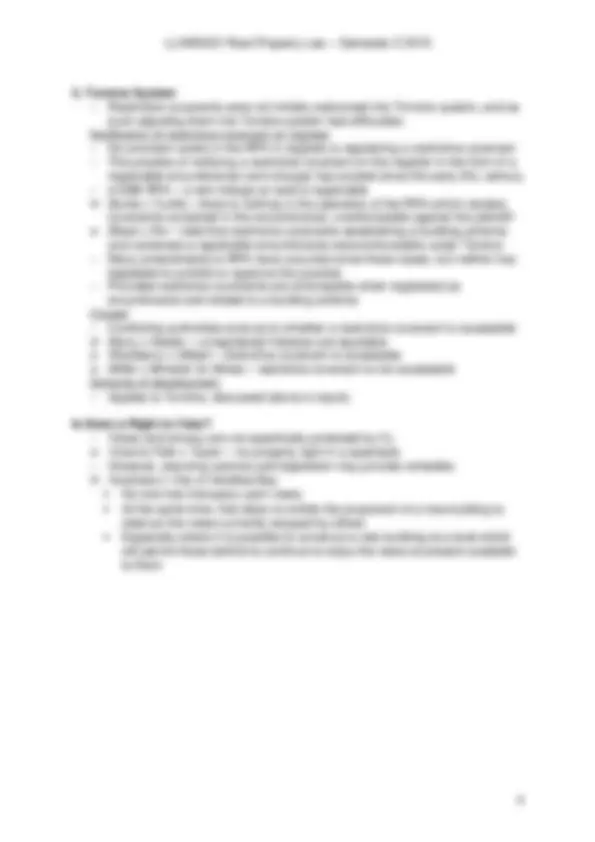




Study with the several resources on Docsity

Earn points by helping other students or get them with a premium plan


Prepare for your exams
Study with the several resources on Docsity

Earn points to download
Earn points by helping other students or get them with a premium plan
Community
Ask the community for help and clear up your study doubts
Discover the best universities in your country according to Docsity users
Free resources
Download our free guides on studying techniques, anxiety management strategies, and thesis advice from Docsity tutors
Roger v Hosegood – The covenant must either affect the land as regards [its] mode of occupation or it must be such as per se, and not merely from.
Typology: Schemes and Mind Maps
1 / 4

This page cannot be seen from the preview
Don't miss anything!



3. Torrens System - Restrictive covenants were not initially welcomed into Torrens system, and as such adjusting them into Torrens system had difficulties Notification of restrictive covenant on register - No provision exists in the RPA in regards to registering a restrictive covenant - The practice of notifying a restrictive covenant on the register in the form of a registrable encumbrance (rent charge) has existed since the early 20th century - s128B RPA – a rent charge on land is registrable Burke v Yurilla – there is nothing in the operation of the RPA which renders covenants contained in the encumbrance, unenforceable against the plaintiff Black v Rix – held that restrictive covenants establishing a building scheme and contained a registrable encumbrance were enforceable under Torrens - Many amendments to RPA have occurred since these cases, but neither has legislated to prohibit or approve the practice - Provided restrictive covenants are enforceable when registered as encumbrance and related to a building scheme Caveat - Conflicting authorities exist as to whether a restrictive covenant is caveatable Barry v Heider – unregistered interests are equitable Woolberry v Gilbert – restrictive covenant is caveatable Miller v Minister for Mines – restrictive covenant is not caveatable Scheme of development - Applies to Torrens, discussed above in equity Is there a Right to View? - Views and privacy are not specifically protected by CL Victoria Park v Taylor – no property right in a spectacle - However, planning controls and legislation may provide remedies Hutchens v City of Holdfast Bay